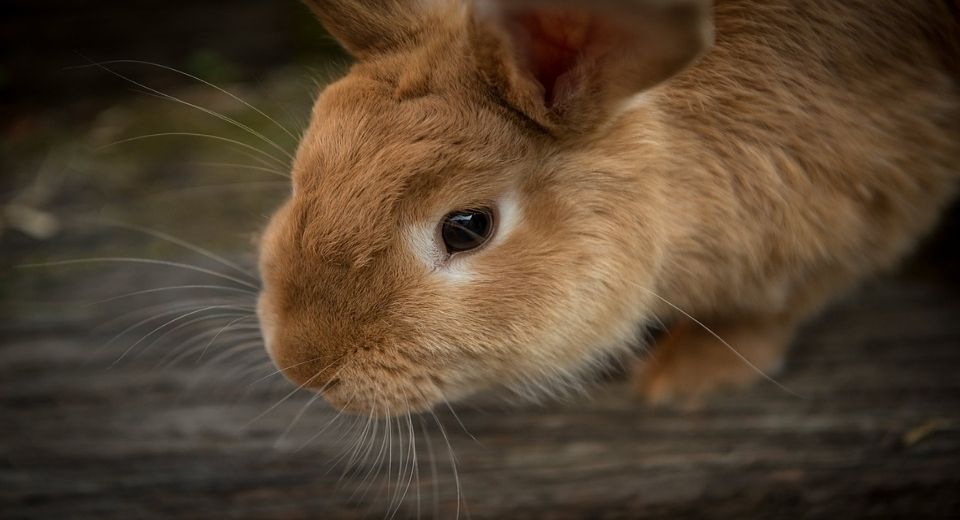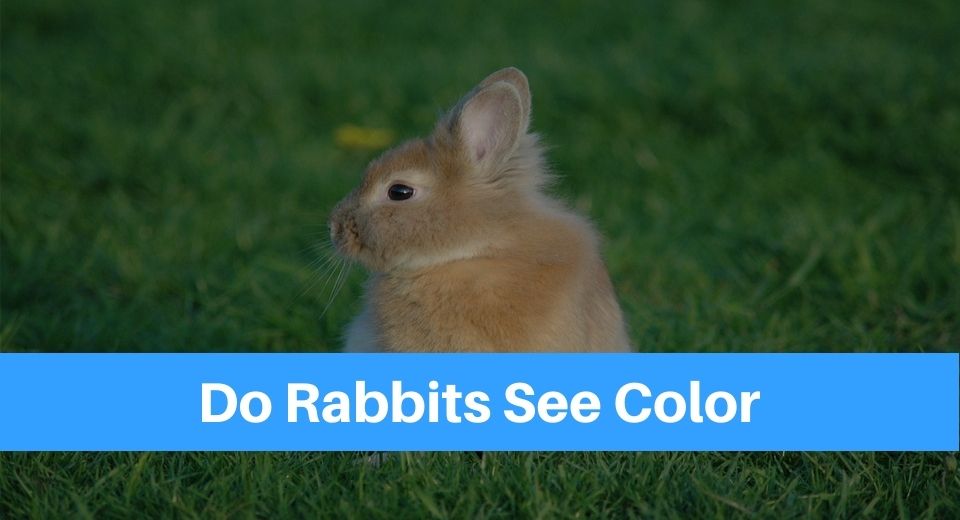Do rabbits see color the way we do? To understand a rabbit’s perspective, here are some key things to know about life through their eyes.
Rabbit Vision

At some point in our lives, we learned that dogs are colorblind and subsequently realized that animals don’t see like us. Whether it be in clarity, lighting, or color, animal vision is different and this is also true with rabbits.
From the get-go, rabbit eyes are different in it’s positioning. Humans, along with wolves, eagles, and snakes, have binocular vision. This means our eyes face the same direction for a clearer picture of the subject and to show depth perception. Binocular vision is common in predators.
On the other hand, rabbits mostly use monocular vision. This is found in animals with eyes on each side of their head, with limited ability to face one direction. Rather than using both eyes to overlap and form one clear picture, they see through one eye at a time. This is found in other prey, such as goats and deer, to keep vigilant of surroundings and stay wary of any attacks.
Other than the different fields of vision, rabbit eyes are also protected differently. Humans have two eyelids, on the top and bottom of the eyes. Rabbits have these as well but with an additional eyelid. This third eyelid is called the nictating membrane, which is a transparent layer that keeps their eyes constantly hydrated, eliminating the need to blink often.
Rabbits blink 10-12 times each hour, possible only because their third eyelid is doing much to protect and keep the eyes hydrated as needed. This membrane also allows the rabbits to sleep with their eyes open to constant remain on high-alert, an especially valuable skill considering that rabbits are common prey.
What Rabbits See
Rabbits are both long and short-sighted and have a wide field of vision. Since they have their eyes on the sides of their heads, they have a panoramic view of their surroundings and can even see above them. These factors are optimized for their survival in the wild and help prepare them for attacks that could come from all directions. That said, the ability to see things from far off and from up close isn’t as ideal as it sounds when in the context of rabbit vision.
In truth, rabbits rely more on their far-sightedness since it helps against predators hunting them and helps warn them of incoming movement. However, rabbits can also be short-sighted when they choose to use the small range of binocular vision for things that are in front of them. That said, they’re more comfortable seeing things from a distance, something true even for domesticated rabbits who don’t need this vision, especially when kept within the house.
Another thing that affects rabbit vision is its crepuscular nature. Unlike nocturnal animals, who wake at night, or diurnal animals, who move during the day, rabbits go out and do their work in the in-between, at dawn and dusk. This is when lighting is dim and the environment is shadowy.
Contrary to popular belief, rabbit eyes do not have night vision, proven by their lack of a tapetum lucidum. This is the layer of light-reflecting tissue that allows nocturnal animals to see in the dark.
How Rabbits See Color
To add to their survival skills, rabbits can see color but not in the way that you imagine.
All vertebrates have cones and rods in their eyes, which are photoreceptors that help interpret light wavelengths for color and brightness.
Rods are most useful under low light. These do not contain any color pigments but they help reflect light and allow humans vision even when it is less bright.
Cones are the photoreceptors needed to identify colors. These detect the brightness of the surroundings and contain color pigments that help differentiate between each color, depending on the pigment present. Humans have three kinds of cones in our eyes to see red, blue, and green. On the other hand, rabbits have two cones that only identify blue and green colors. This means that rabbits have dichromatic vision.
Even though they have two of the three cones we have, it doesn’t mean they see these colors how we do. Rabbits have more green cones than blue cones, which could make even the similar colors we see look very different to them. They also have a much lower cone density compared to humans. We can have up to 180,000 cones per sq. mm while rabbits peak at 18,000 cones each sq. mm. By our definition, rabbits are partially color blind.
Even so, rabbits beat us in their number of rods. Since rods are best for minimal light and rabbits are most active when natural light is dim, rabbits are born with more rods for their survival. For reference, humans can have up to 160,000 rods per sq mm in the eye while rabbits have up to 300,000 rods in each sq. mm.
One study has even found that, at least with rabbits aged two-three months old, they have different color pigments dominating different areas of the eye. Green cones are found in most of the eye while one small section contains only blue cones.
People don’t know how to interpret this learning yet but it’s clear that their world looks very different from what we see. Other than green and blue colors, we understand that everything else is interpreted as gray in rabbit vision.
This color vision is also optimal for their work hours, since blue and green light receptors are most needed when lighting is low. Dawn and dusk environments are particularly bathed in yellow light and seeing in blue and green helps give yellow light a much higher contrast for their protection.
Seeing color is important in survival but with common prey like rabbits, sensitive hearing and advanced smell are both more crucial to their survival than developing a red cone in their eyes.
What Rabbits Don’t See
While it’s clear there is a whole lot that rabbits can see, there are still a lot of things they can’t.
First of all, their wide field of view finds its weakness in its blindspot, right in front of its nose. if you’ve ever wondered why your rabbit can’t see when something is right in front of them, this is why.
Their eye placement gives them a 10° blind spot in the center of the direction they’re facing. The eye placement also only allows for a 30° wide area of binocular vision. Needless to say, this is very limited. Their monocular vision lacks depth perception, making the rabbit world look very two-dimensional.
Binocular vision is needed for a better understanding of depth and helps interpret distance more accurately. To make up for this 2D world, rabbits rely on the movement of both the approaching object and of their heads. This ability is called eye scanning and gives them a better idea of their predator’s distance.
Rabbits also have grainy eyesight, coming from their lack of cone photoreceptors. Their vision is not very sharp but they protect themselves instead with other senses to detect incoming danger.
Final Thoughts
It’s hard to visualize how rabbits see the world. You and your rabbit can live in the same home and play with the same toys but you will not be seeing the same things. Something vibrant and colorful to you could look dulled down, muted, and grainy to them. Even the fact that they see blue and green doesn’t guarantee what color they’re seeing, since the number of cones present is very different from what we’re used to.
There is so much more to learn about rabbit vision and the colors they see! This is a particularly worthy endeavor to help make your rabbit feel more comfortable in your home.

